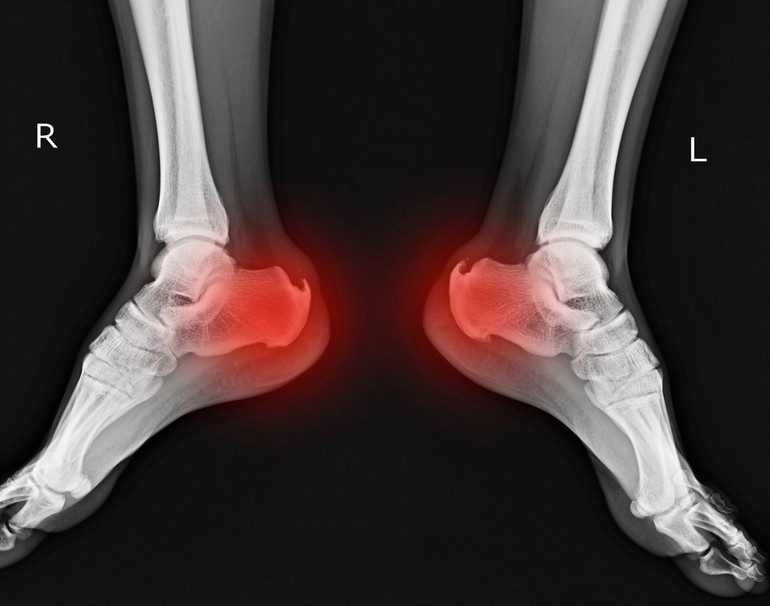The Centers for Advanced Orthopaedics is redefining the way musculoskeletal care is delivered across the region with locations throughout Maryland, DC, Virginia and Pennsylvania.
Did I Bruise Or Fracture My Heel?

Our heels are oftentimes the first part of our body that strikes the ground when we walk or run, and even though this results in some stress, the fat pad on our heel can do a pretty good job protecting the area from injury. However, our feet and heels can also be the first part of our body to strike the ground in the event of a fall off a ladder or when we trip down the stairs, and this can lead to much greater force being exerted on the heel area. If this happens, you’ll likely have some pain and discomfort in the area, and it can leave people wondering if they simply bruised the area or are dealing with a more severe injury like a fracture. In today’s blog, we take a closer look at how heel bruises and fractures are diagnosed and treated.
Causes and Symptoms Of A Heel Bruise Or Fracture
As we touched on in the introduction, heel bruises and fractures are typically the result of a moment of acute stress on the heel area, like what you might experience during a fall. Other factors can also make it more likely that your heel will endure more stress during a fall or athletic activity, like being overweight, wearing unsupportive shoes, overtraining, running on hard, uneven surfaces and being older, as this can lead to a natural decrease in the fat pad of the heel. Because of the nature of the injury, they tend to be common in athletes who overtrain or manual laborers who do a lot of movement without wearing a supportive pair of shoes. Anyone who suffers a fall is also at risk for a heel bruise or fracture.
Symptoms of a heel bruise or fracture include:
- Pain when walking or bearing weight
- Tenderness
- Swelling
- A flattening of the flat pad of the heel
- Bruising
Diagnosing Heel Bruises And Fractures
If you land hard on your heels, or you’ve noticed new symptoms in the area after chronically stressing your feet, you’ll want to connect with a foot specialist to get to the bottom of your pain. Your foot specialist will start by asking about your symptoms, including what caused pain to develop in the first place. They’ll also conduct a physical assessment of the foot and may place some gentle pressure on the area.
If they suspect that the calcaneal bone above the fat pad has been fractured, they’ll likely order an imaging test. Fractured calcaneal bones can be diagnosed with the help of an X-ray, which can usually be completed the same day as your initial appointment.
Treating for a bruised heel and a calcaneal fracture are similar, but they can vary based on how the area responds to treatment. In most instances, if you’re simply dealing with a heel bruise, you can likely find relief with weeks of conservative care. Treatment will involve RICE protocols, which stands for rest, ice, compression and elevation. You’ll really want to protect the area when you move, because even simple actions like walking can continue to worsen the bruise. A walking boot or other protective footwear can help the shield the heel from pressure as it heels.
Calcaneal fractures are typically treated with the same conservative options, but a walking boot or protective cast is more common as the area will need a longer period of protection from normal stress. Because surgery to address a calcaneal fracture is complex, it is avoided if at all possible, but it may be pursued for extreme fractures where the shape and stability of the heel has been compromised. The majority of people experience fantastic results with non-operative techniques, but the team at The Centers For Advanced Orthopaedics can provide you with top tier care if you end up needing heel reconstruction surgery.
For more information about heel bruises and fractures, or to talk to a foot specialist about the discomfort you’re dealing with in your heel, reach out to our team today at (703) 584-2040.